Many personalities such as Friedrich Schiller, Carl Zeiss, Novalis, Ernst Abbe, Johann Gottlieb Fichte and August Schott are associated with the second largest city in Thuringia (110,000 inhabitants). Jena, picturesquely situated on the Saale Riverbank, has a lot to offer in terms of interesting things to see and do in a small area. Join me on a tour that will take you to the most important Jena sights!
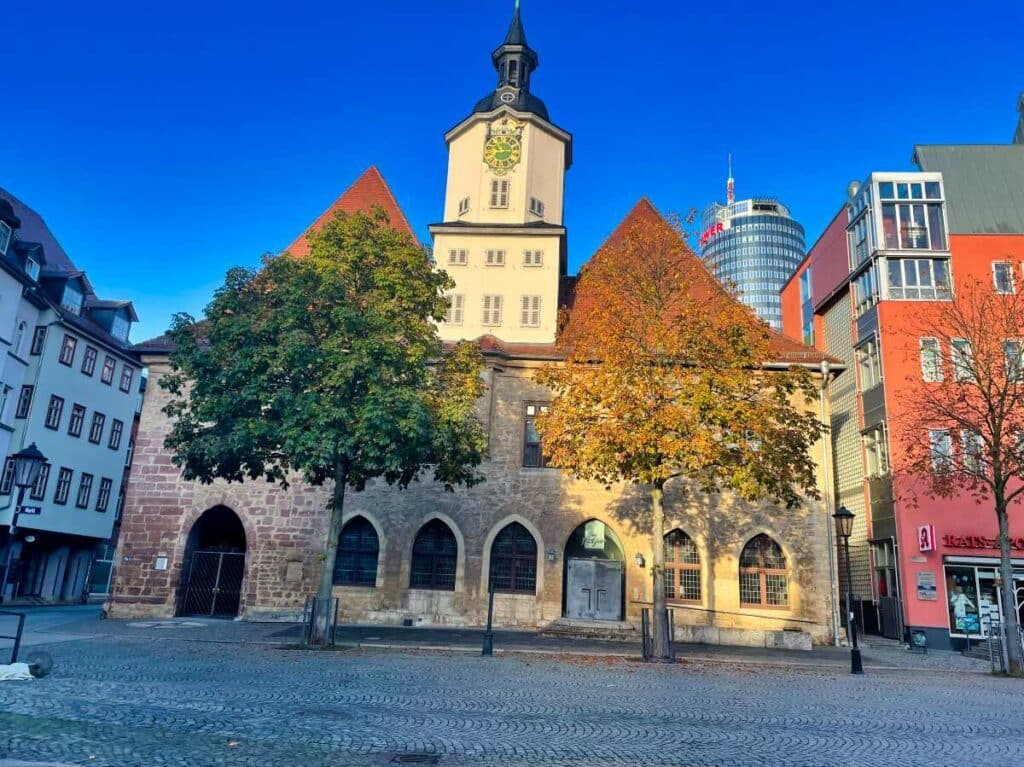
Market square with town hall and Hanfried
Let’s start our tour in the center of Jena at the market square. The square is lined with beautiful buildings, the most magnificent being the Historic Town Hall from the 15th century. Every hour on the hour, a bird, the “Schnapphans”, part of an astronomical art clock, snaps at a golden ball. Until today, as far as is known, however, in vain.

On Tuesdays, Thursdays, Fridays and Saturdays, the “Green Market” takes place on the square, with a rich offer of vegetables, fruits, cheeses and sausages and meats, looked at favorably by a – let’s say – handsome elderly gentleman. It is founder of the university, the Elector and Duke JoHANn FRIEDrich I of Saxony, also known as the Magnanimous. He is affectionately called the “Hanfried” by the locals. By the way, you can also find the tourist information of Jena at the market place.
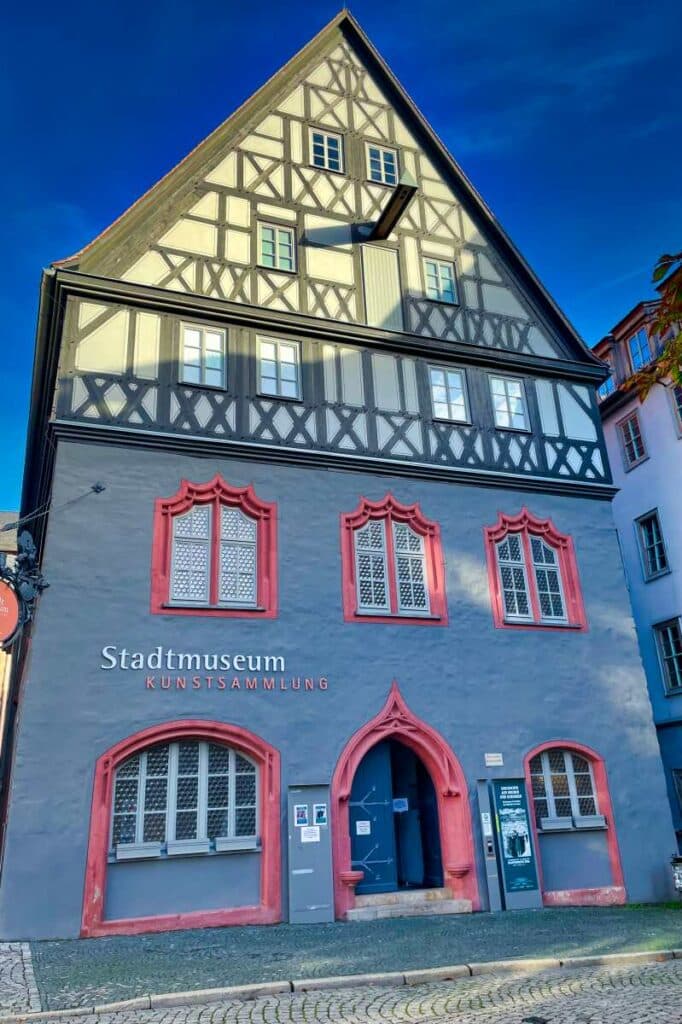
City Museum
On the north side of the market square stands a stately building whose roots date back to the 13th century. The building is called “Göhre”. It houses the Jena City Museum with interesting exhibits on the city’s history.
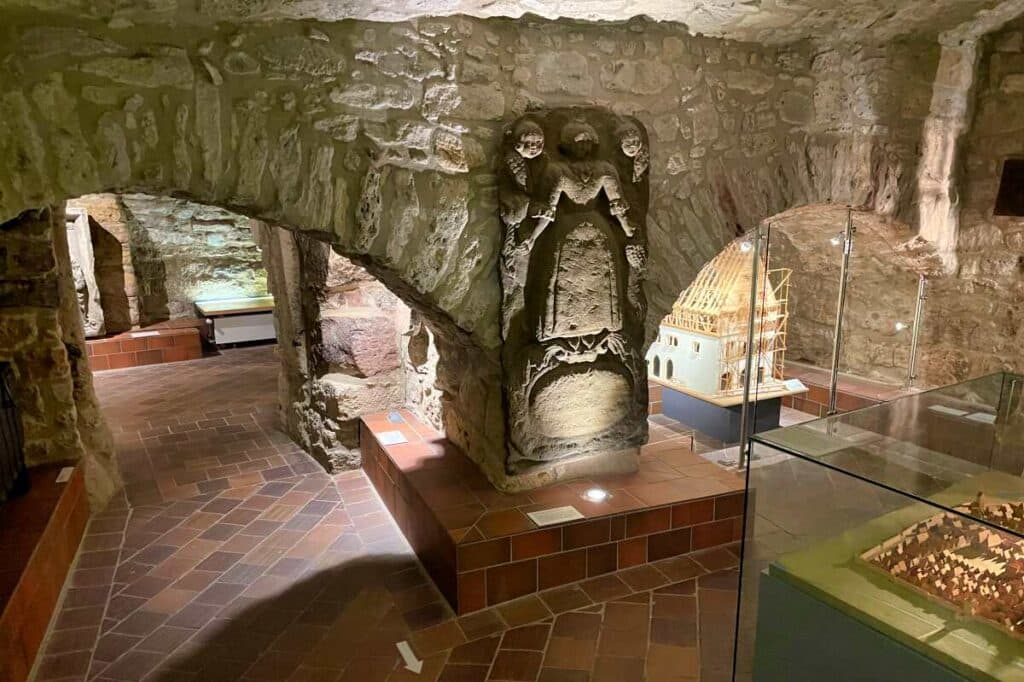
In the basement you will find old writings, a city model, a Pieta representation, crucifixes, a so-called “punishment stone” and much more from the medieval history of Jena. On the second floor, interesting facts about the history of the university, the fire of 1806, the impact of the Napoleonic Wars on the city and the Wartburgfest are explained.
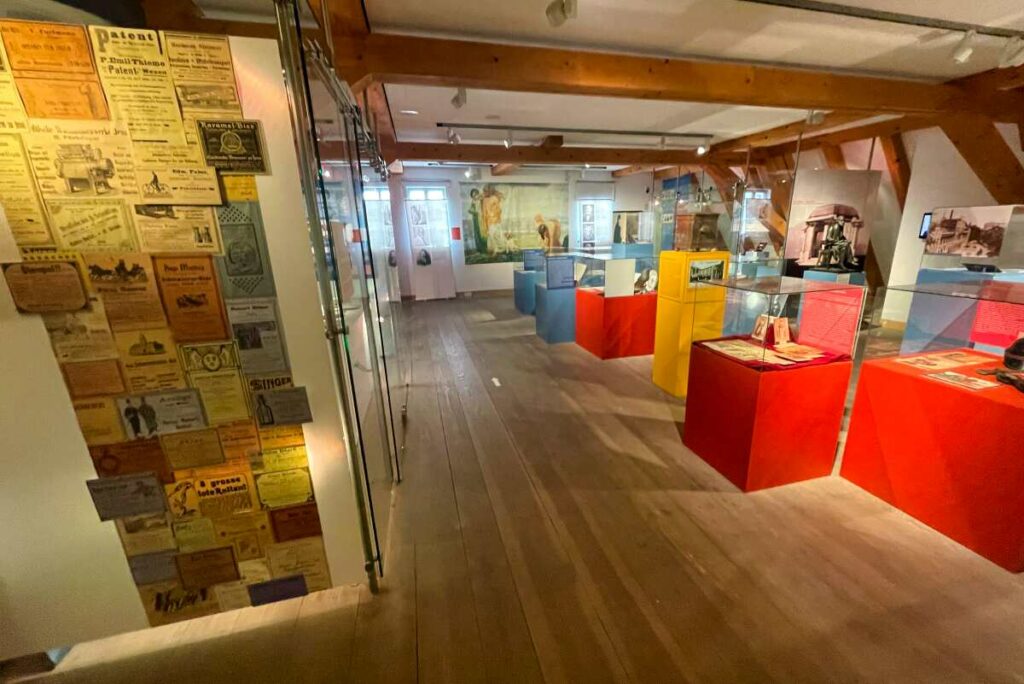
The third floor is dedicated to Jena’s dawn of modernity and includes information on porcelain production and publishing in Jena, the trade union movement and, of course, about Zeiss, Schott and Abbe.
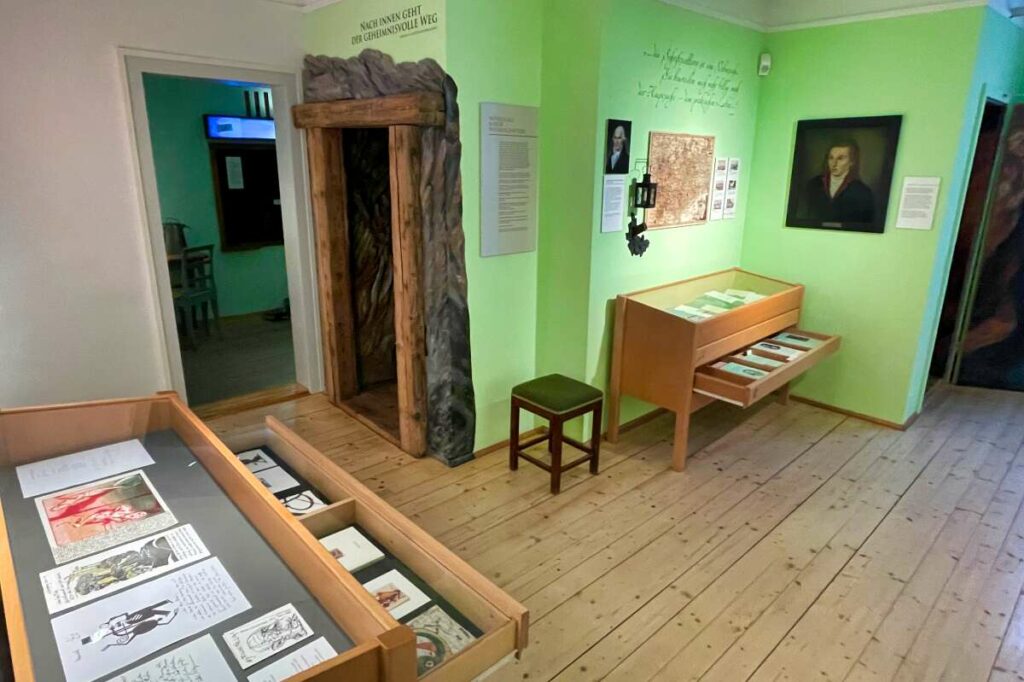
Romantic house
From the market square you can now turn into the street “Unterm Markt”. Almost at the end of the road, turn right through a passageway. The so-called “Romantikerhaus” is located in a backyard there. It is a literary museum that was set up in the former home of the philosopher Johann Gottlieb Fichte.
The museum thematically deals with the literary epoch of early Romanticism, a movement that started from Jena and included such famous personalities as Clemens Brentano, Novalis, the Schlegel brothers, Wilhelm Tieck and the philosopher Schelling, whose thinking the museum provides interesting insights into. In addition, two rooms on the second floor are reserved for changing special exhibitions.
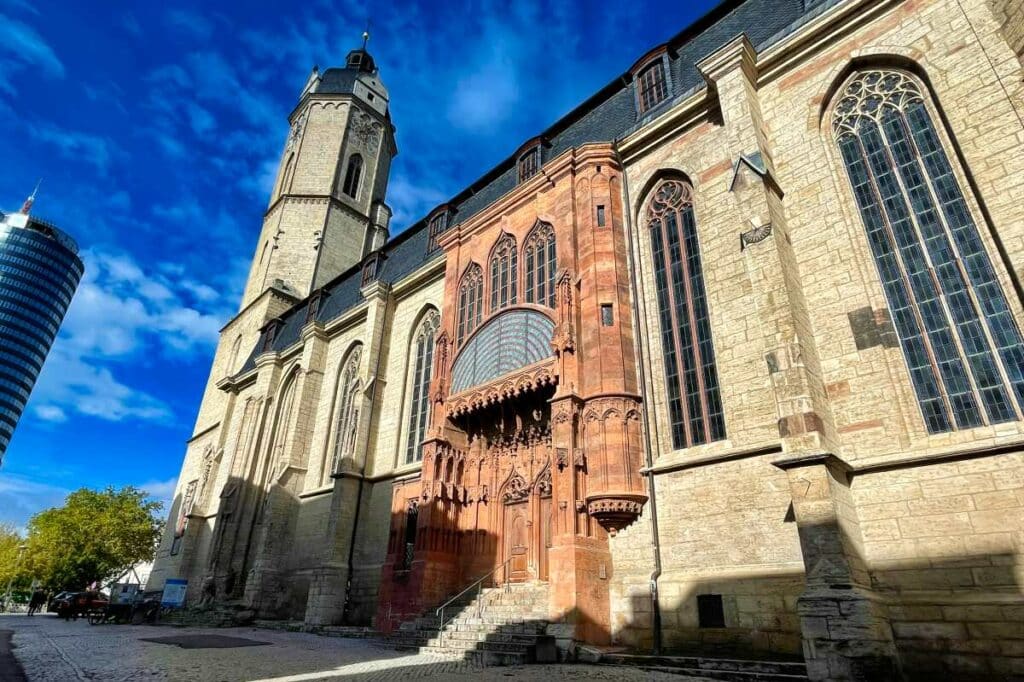
St. Michael’s Church
Via Unterlauengasse you reach Saalstraße and the imposing building of St. Michael’s Church. Its construction started at the end of the 14th century. Today it is one of the largest hall churches in Thuringia. In the church you will also find a tombstone for Martin Luther, who preached here. The tomb slab was originally to be laid in the castle church in Wittenberg, but as a result of the Schmalkaldic War it remained here in Jena.
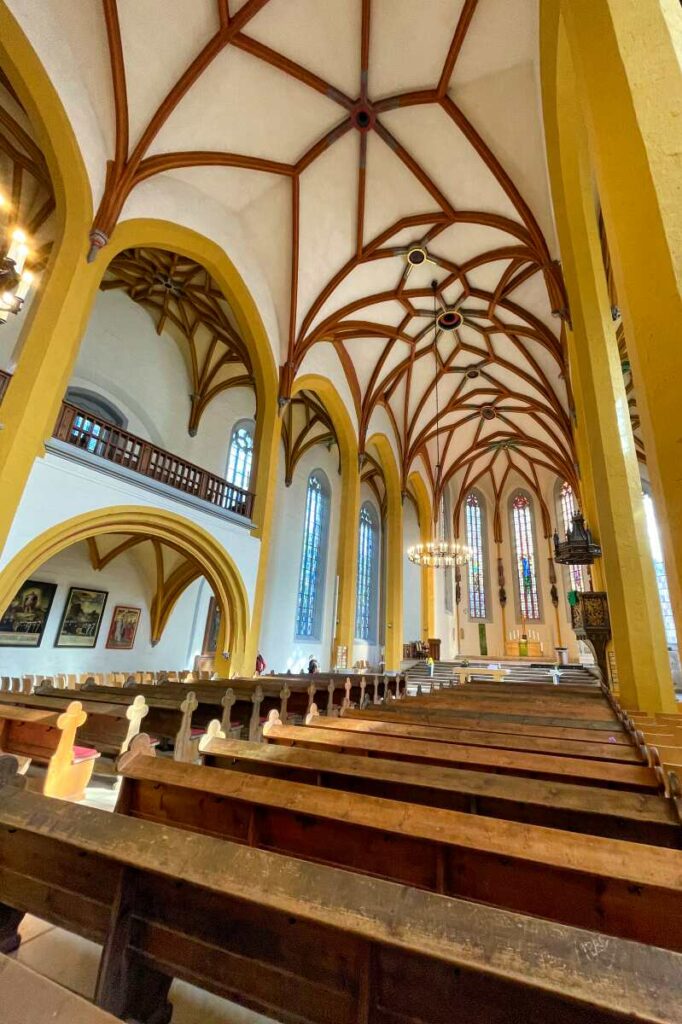
If you want, you can climb the 75-meter tower and enjoy the view from there, but honestly, the view from the Jentower is much more spectacular – and there’s an elevator there.
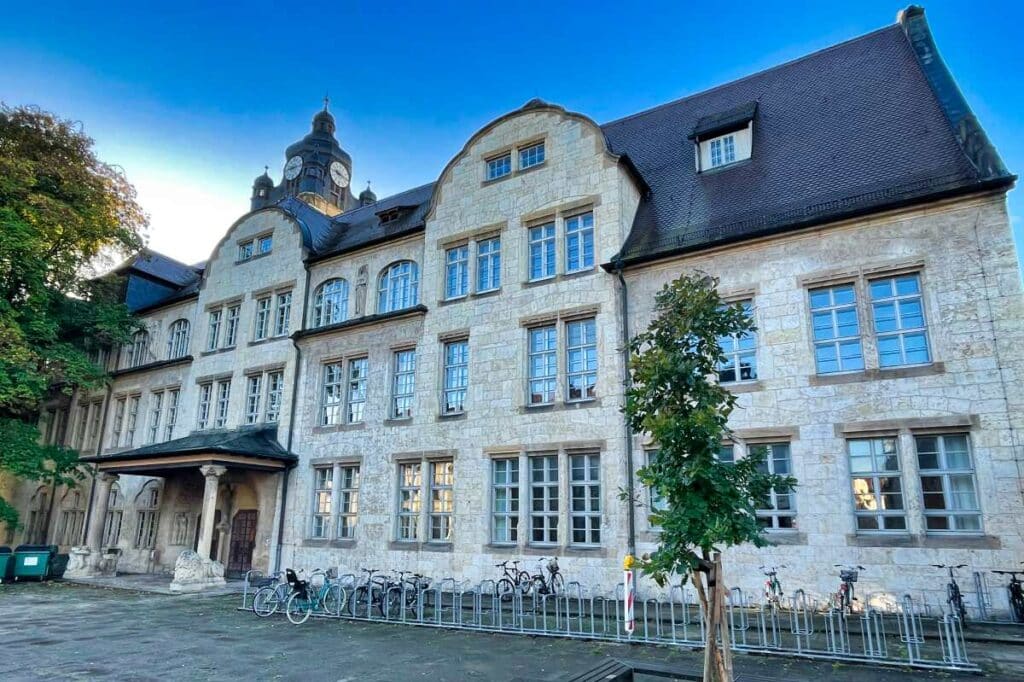
University
North of Kirchplatz, Weigelstraße branches off and leads to Fürstengraben: You are already in front of the university. Jena university was founded in 1558. At that time, Elector John Frederick of Saxony had lost the Schmalkaldic War and therefore lost the electorship and with it the University of Wittenberg. Therefore, he simply created a new one! The university subsequently enjoyed an excellent reputation; Fichte, Schelling, Hegel and Haeckel taught here, and its students included Novalis, Hölderlin, Brentano, Marx and the optical triumvirate of Abbe, Schott and Zeiß.
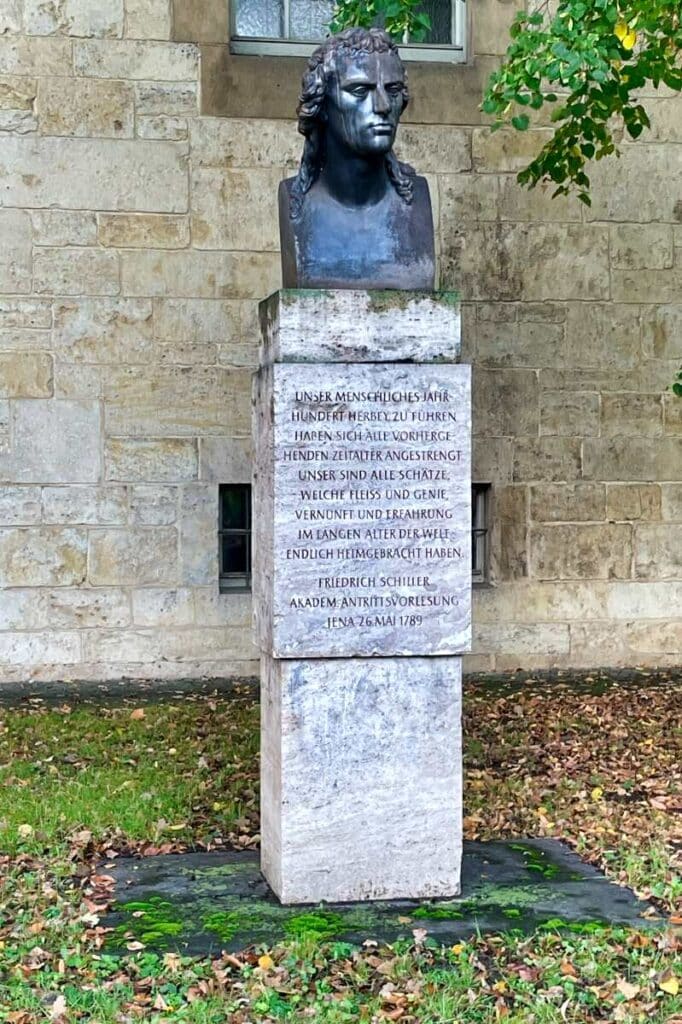
And, of course, Friedrich Schiller began his professorial career here, after whom the university is named and in whose honor a bust was erected in front of the university. Approximately 18,000 students were enrolled at the teaching institution in 2015, representing about one-sixth of Jena’s total population.
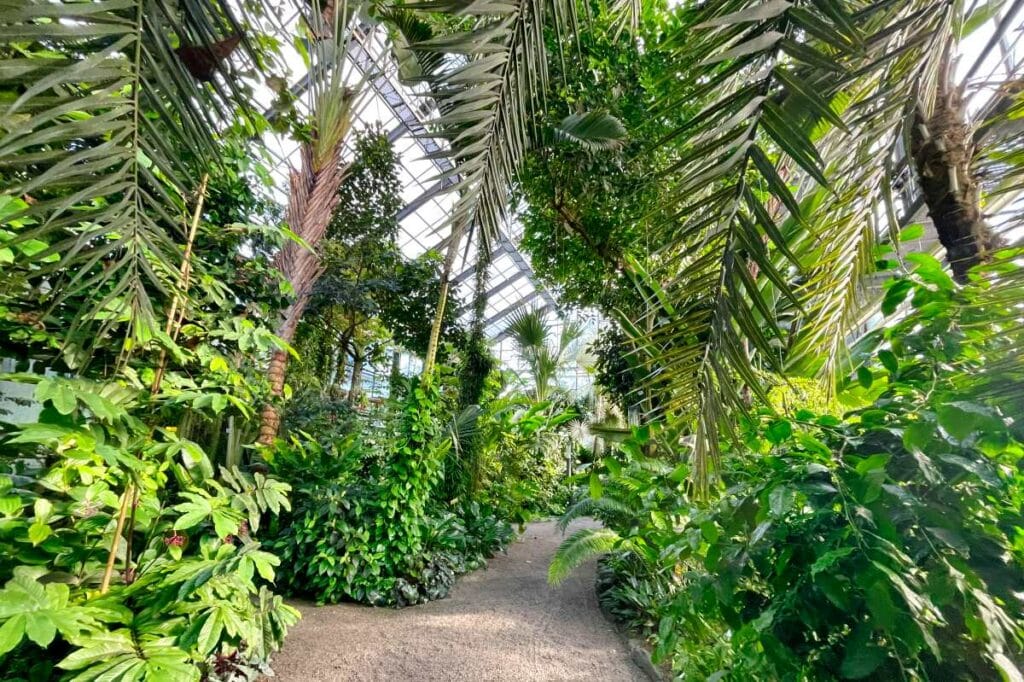
Botanical Garden
Just a few steps further along the Fürstengraben you will reach a botanical sight of the first order: the Jena Botanical Garden. It was founded in 1586, making it the second oldest of its kind in Germany. Significant developments and expansions were also influenced by Goethe.
The botanical garden, which was redesigned in the 19th century in the style of a landscape park, now covers an area of 4.5 hectares and has around 10,000 plant species. For me, it is the most beautiful botanical garden in Germany! In the show greenhouses with the tropical house as the highest show house, you can marvel at over 1000 plant species.
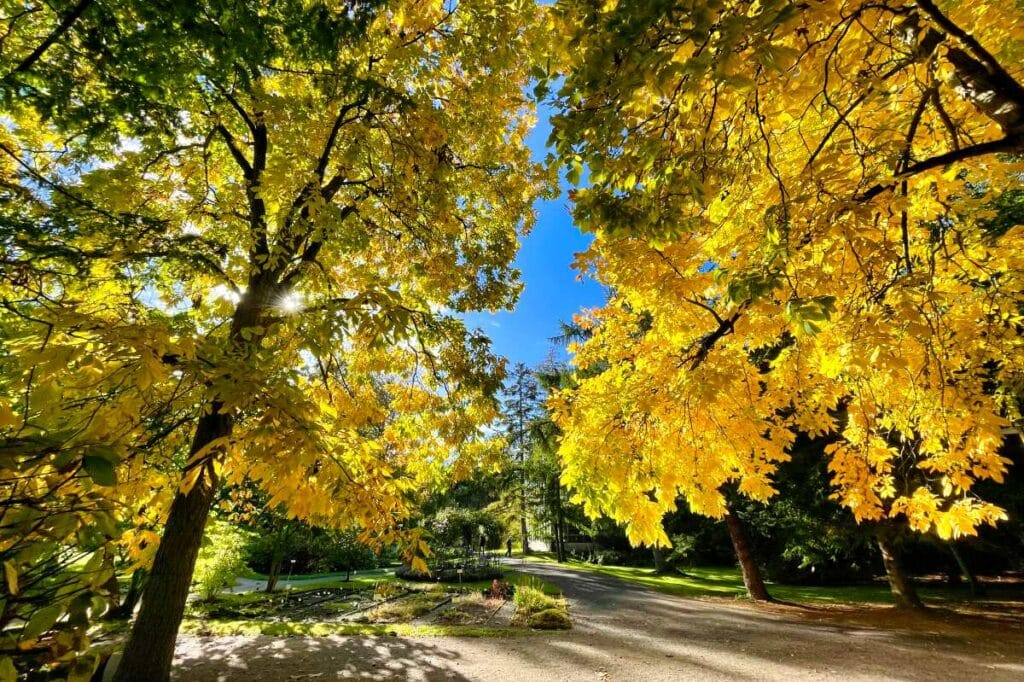
The outdoor area of the Botanical Garden is divided into different outdoor precincts and has a magnificent tree population, which offers a colorful spectacle, especially in autumn.

Planetarium
Right next to the Botanical Garden is the Zeiss Planetarium. It opened in 1926, making it the oldest projection planetarium in the world! Her, you can admire shows on educational topics, but also programs aimed at the whole family, as well as music shows. I can warmly recommend this to you – but for understandable reasons do not provide any photos.
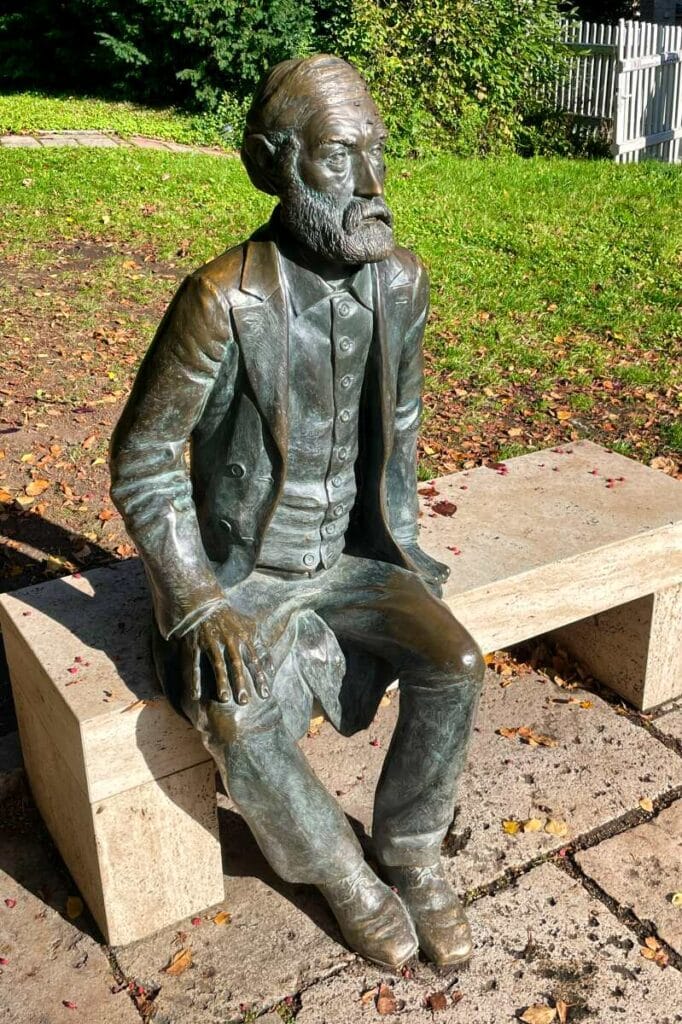
The owner of the planetarium is the Ernst Abbe Foundation. Ernst Abbe was a physicist with strong ties to Jena, working primarily in the optical field, and now sits directly in front of the planetarium, where he is delighted by every visitor.
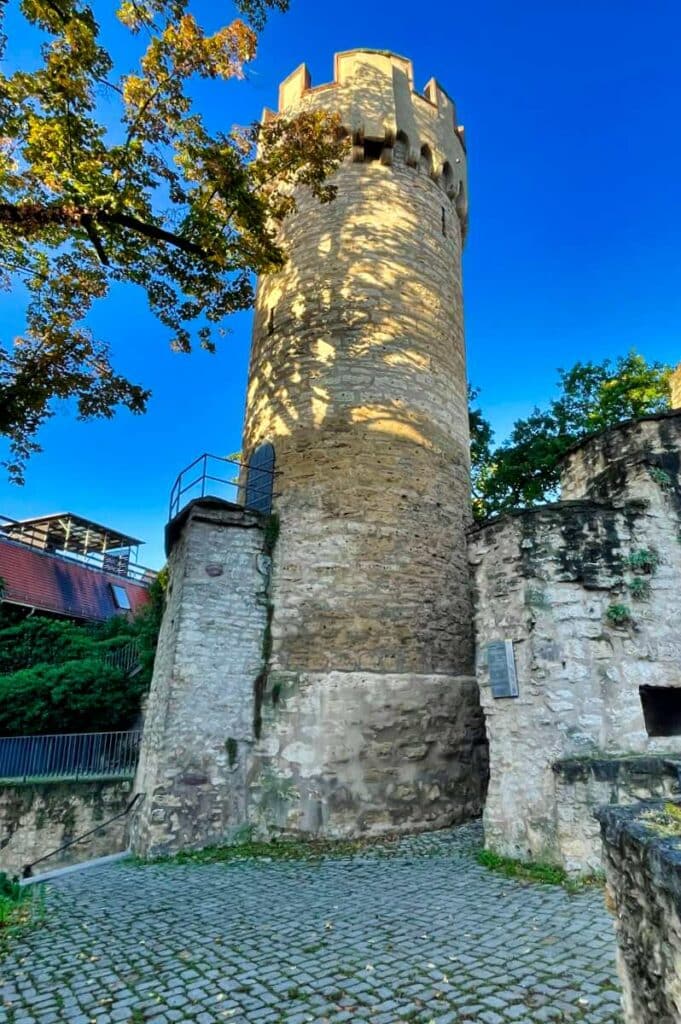
Powder Tower
Diagonally opposite the entrance to the Botanical Garden stands the Powder Tower, another of the Jena sights. It was built in the 14th century as a corner tower of the medieval city fortifications.
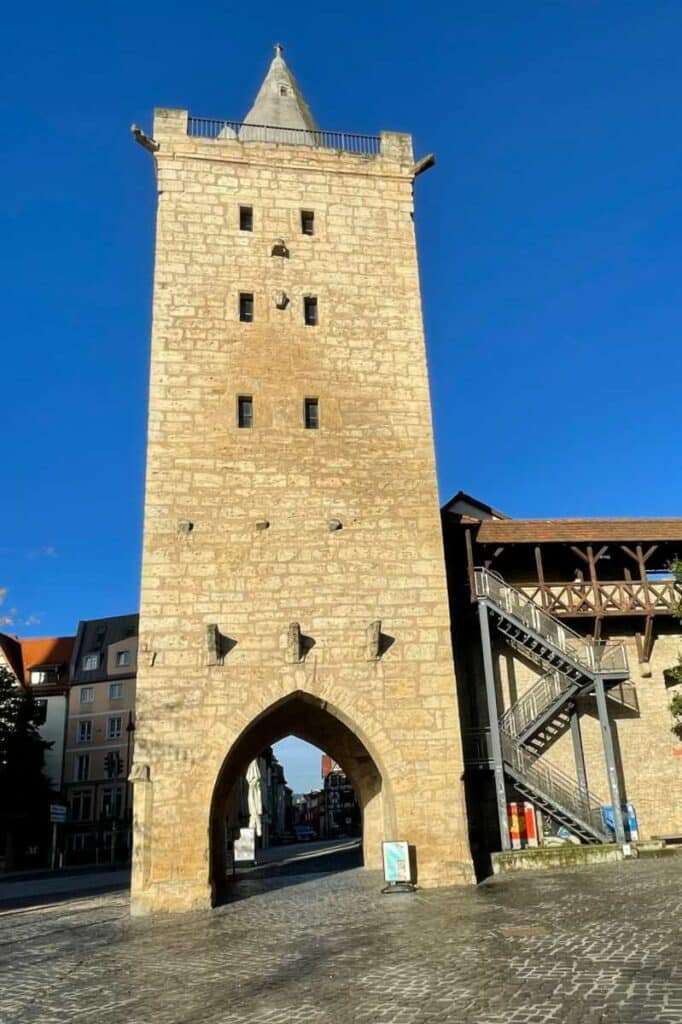
Johannistor
If you then turn immediately left into Johannisplatz, you will come to Johannistor, the last preserved city gate. It was already mentioned in documents at the beginning of the 14th century.
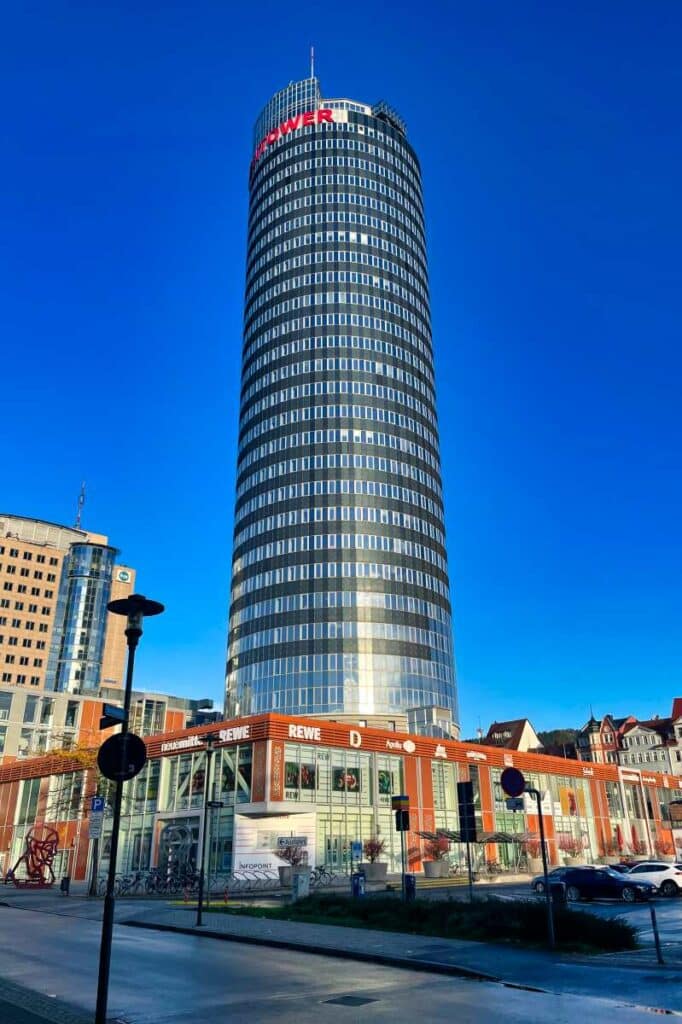
Jentower
I don’t have to explain to you how to get to the Jentower, because you can’t miss it. Actually, there is hardly a place in Jena from which it cannot be seen, it has also crept into the photos in this post again and again. The Jentower was built in GDR times and is the tallest office building in Thuringia with its 140 meters and 30 floors. Its glass facade has nearly 1500 windows. The people of Jena affectionately call him the “cookie roll”.
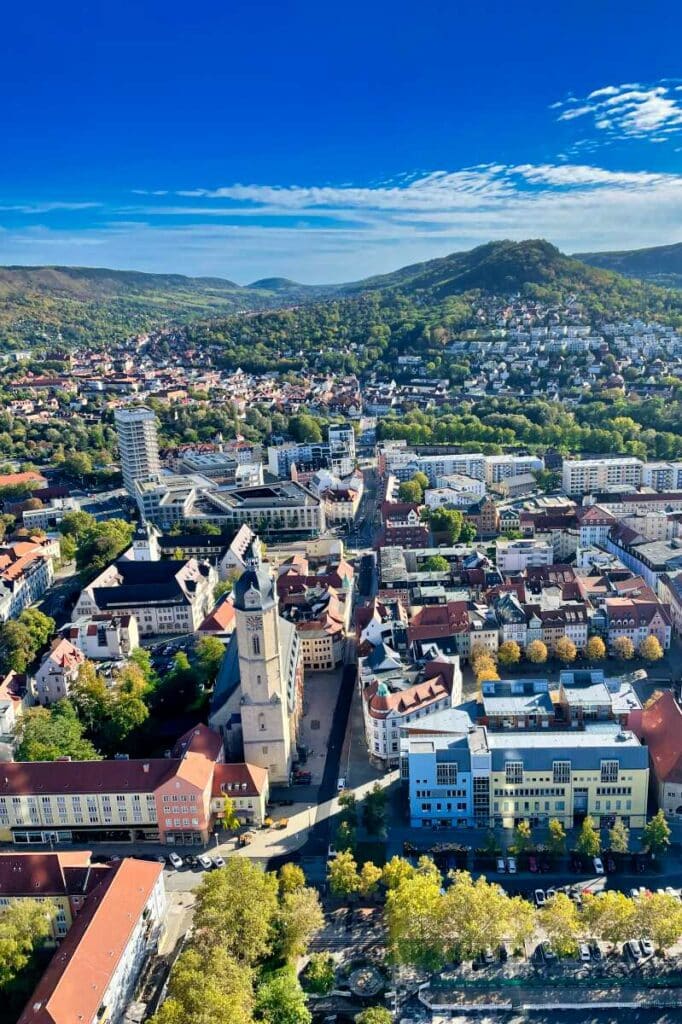
But what makes it one of the most significant Jena sights is the elevator ride to the observation deck on the 28th floor. From there you have a fantastic view of the Saale valley and the surrounding mountains, in good weather you can even see the Leuchtenburg on the horizon.
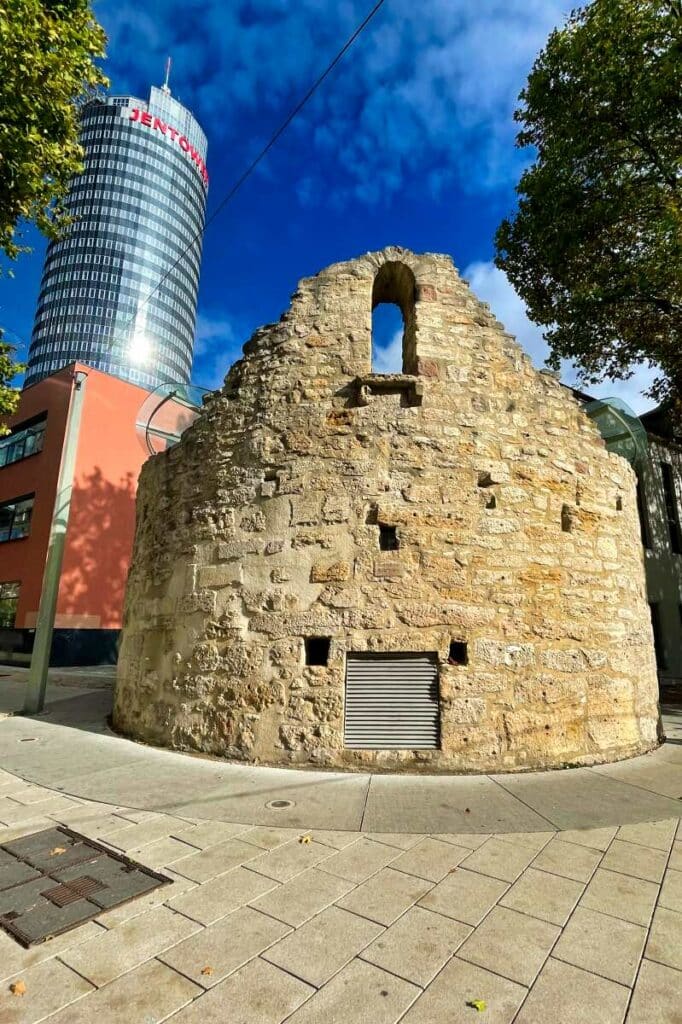
Anatomy Tower
If you follow the Leutragraben a few steps from the entrance to the Jentower, you will come to the next tower, which is a bit different from the Jentower: the Anatomy Tower. It is another corner tower from the old city fortification, but not much remains of it. The interesting thing about it is that in 1750 an anatomy lecture hall was built on its stump, where – of course – Goethe discovered a previously unknown bone, the intermaxillary bone.
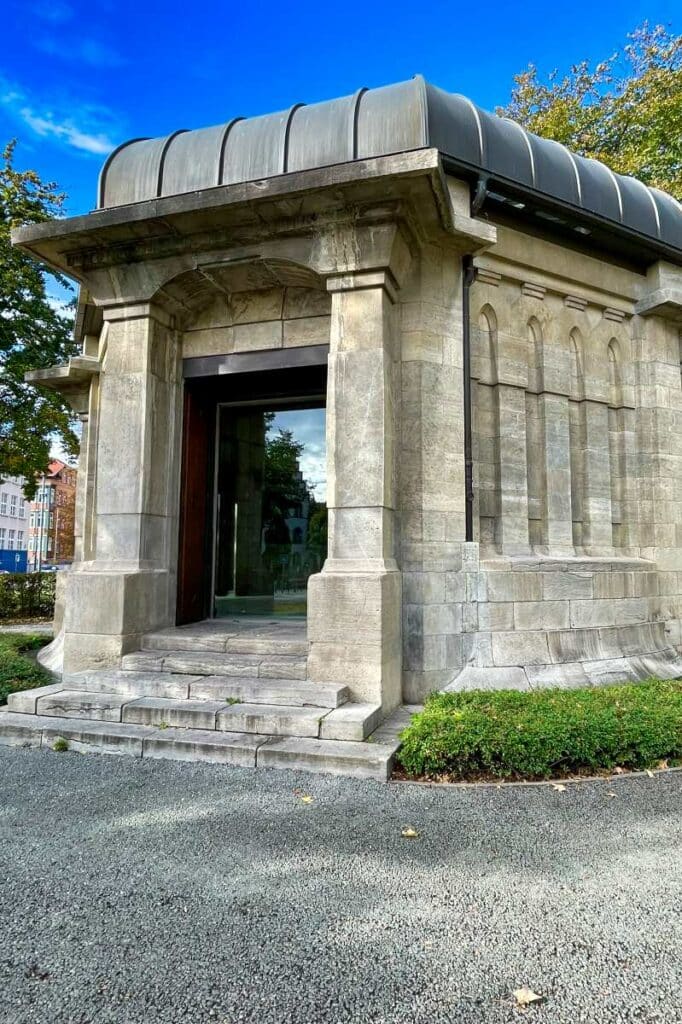
Ernst Abbe Monument
Now continue along Leutragraben a little further until you turn off through a house passage to Ernst-Abbe-Platz. By the way, I have never seen such a house passage: It is just big enough for a streetcar to pass through, but its route ends a few meters later – definitely not one of the classic, but one of the most unusual Jena sights.
In any case, at the end of the square, turn left to Carl-Zeiss-Platz. There you will find the Ernst Abbe Monument, an octagonal structure with a dome light. It was designed by the famous Art Nouveau architect and designer Henry van de Velde, who also designed a tableware service for a porcelain factory in Jena and created designs for a public bath in Jena, which were never realized.
Optical Museum
The Optical Museum, where Ernst Abbe worked, is located just across the street from his monument. At the moment, unfortunately, it can not be visited, because it is being rebuilt. A museum is to be created here as a world of experience, in which the world-famous collection will be on display and one will also find over 100 hands-on stations, the largest glass archive in the world and a lighting laboratory. The opening is planned for 2026. Let’s look forward to it!
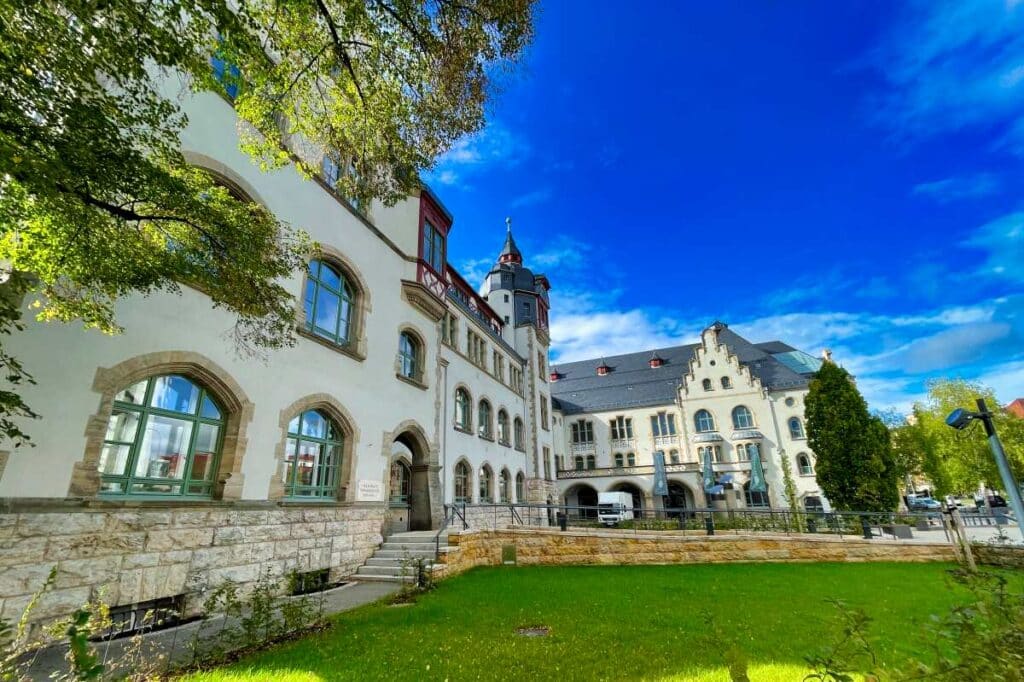
Volkshaus
Ernst Abbe was not only a highly respected physicist, but also a committed social reformer, on whose initiative the Volkshaus (“People’s house”) was built. Abbe planned it as a public place open to every political and cultural initiative. The building was completed in 1903. Today, the Jena Volkshaus is still used as a venue for galas, concerts, meetings and conferences. The Ernst Abbe Hall can seat up to 1000 people.
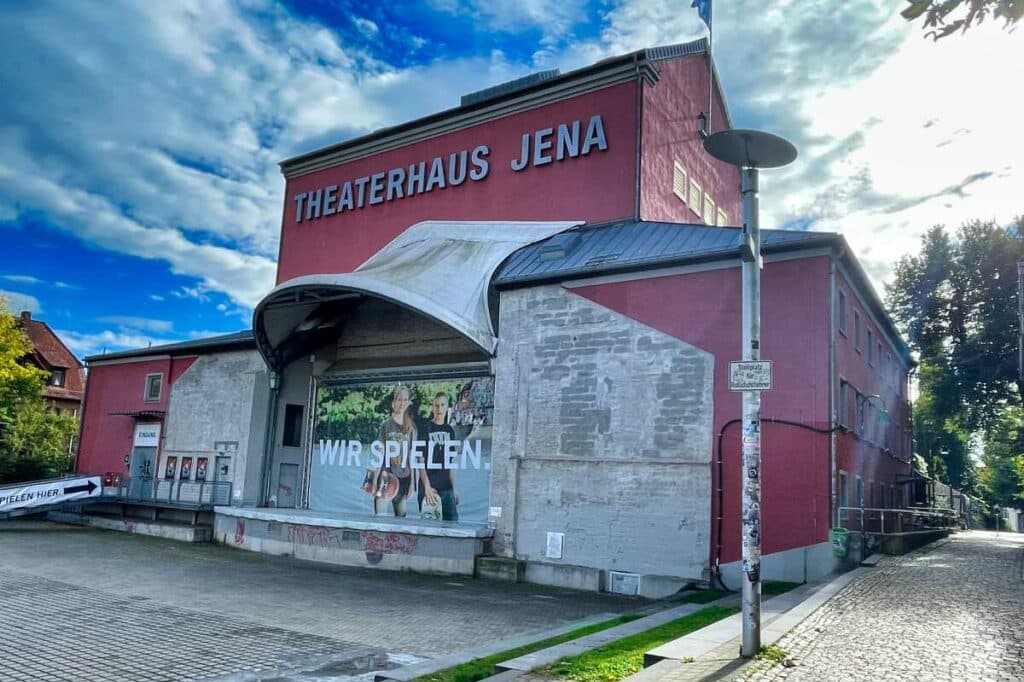
Theaterhaus
From the Volkshaus, the route leads across Ernst-Haeckel-Platz and Schillerstraße to the Theaterhaus in Schillergässchen. The theater was built in 1872 and then rebuilt several times. Over time, it became so dilapidated that the auditorium was demolished in 1987 to make way for a new building.
But nothing came of it, so that the theater still exists today as a ruin. However, this did not prevent renowned directors and artists from continuing to perform in the ruins and draw attention to themselves with spectacular productions. The repertoire consists primarily of contemporary plays.
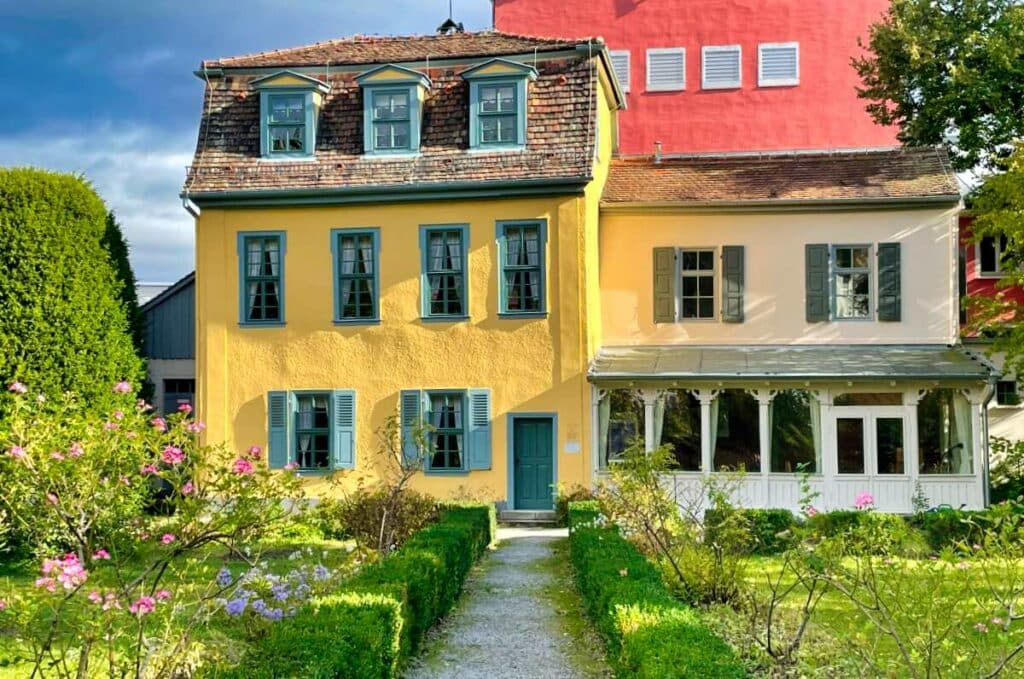
Schiller’s garden house
Things become more classic again when you walk a few steps further along Schillergässchen and enter a rather inconspicuous building from the side of the alley. It is Schiller’s garden house. Schiller was appointed professor at the University of Jena in 1789, but suffered from a chronic lung disease and therefore sought a house with a garden where he could spend the summer months in the open air. He finally found this garden house, which he moved into with his family in 1797. In the garden there is still a stone table where Schiller sat with Goethe several times.
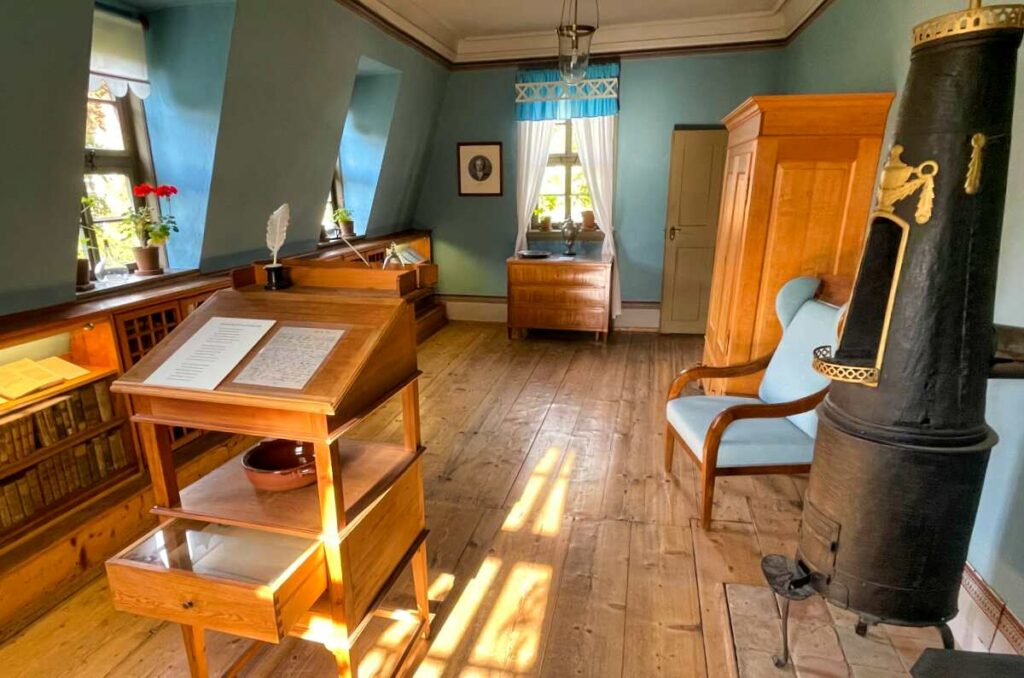
In the house there are many testimonies to Schiller’s life during this time and in some cases still some original furnishings.
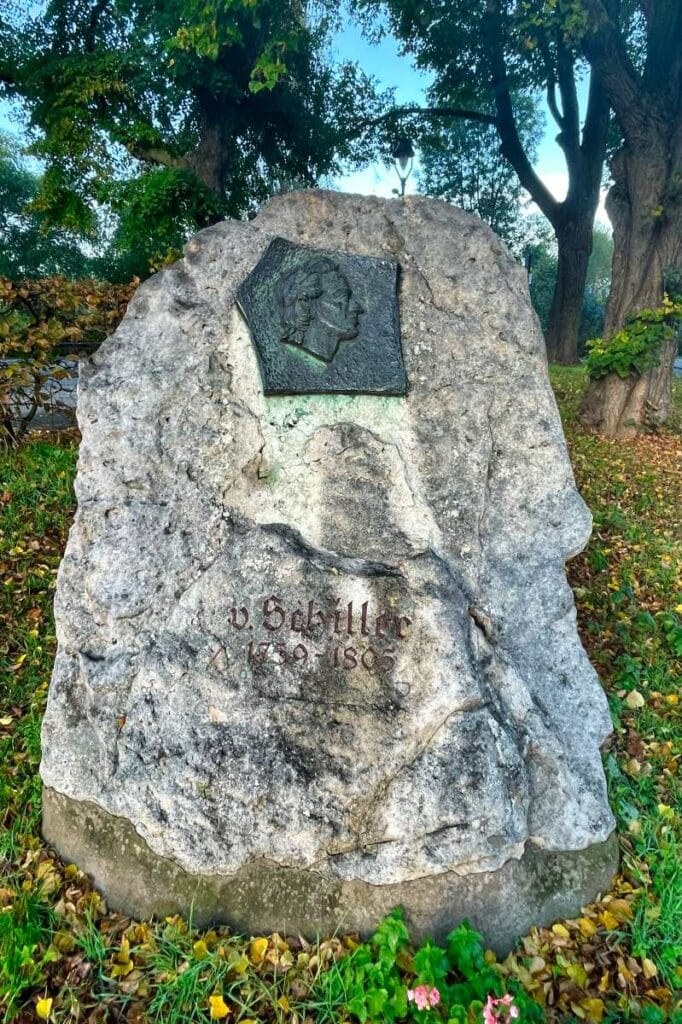
Schiller Monument
Another tip for Schiller enthusiasts: there is a monument in honor of the great poet on the other side of the Saale at Wenigenjenaer Ufer 5. But I can’t tell you why it’s right there. It is probably located here because it is only a few steps from the church “Unserer Lieben Frau”, also known as Schillerkirche, in Schlippenstraße: Schiller and Charlotte von Lengsfeld were married there.
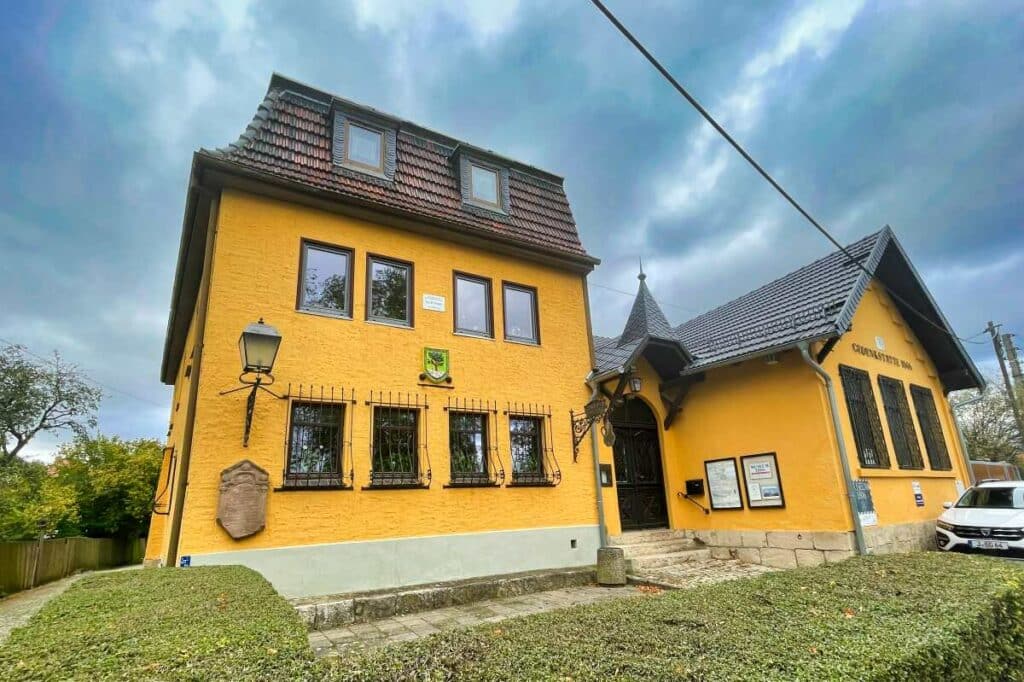
Napoleon and Jena …
… does that ring a bell? Of course, the Battle of Jena and Auerstedt. On October 14, 1806, Napoleon defeated the Prussians and Saxons at Jena, and his Marshal Davout even defeated the main Prussian army at Auerstedt. After his successful march through the Prussian lands, Prussia was relieved of half of its territory in the Peace of Tilsit.
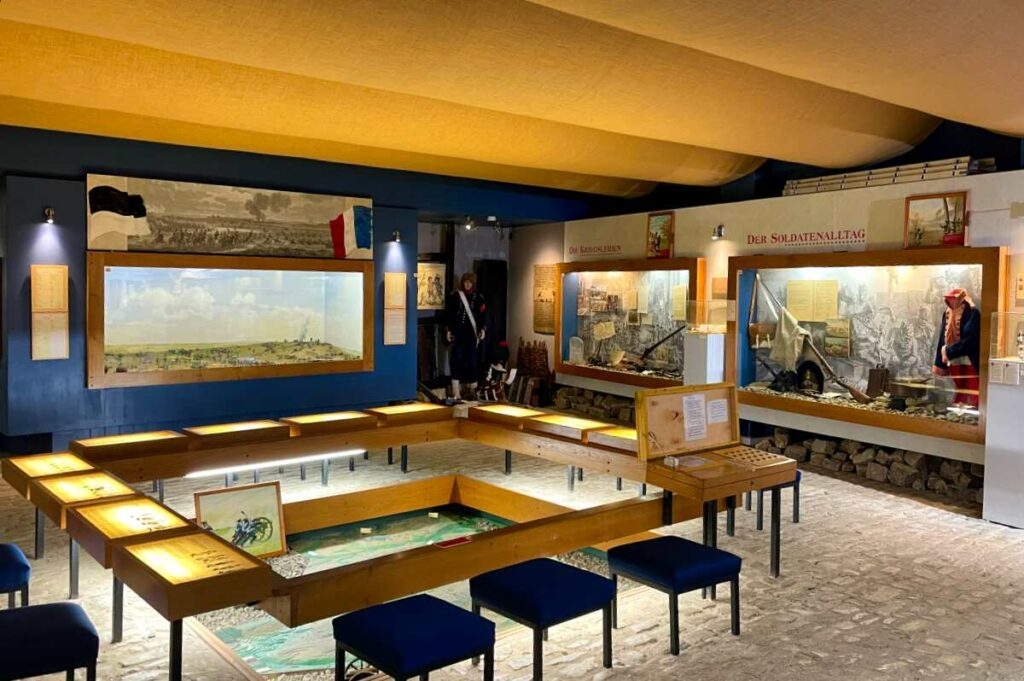
In fact, however, there was not the one battle at Jena, but several battles, including one at Cospeda. You should visit this place: in a beautiful building, where the painter Emil Nolde lived at times, there is a small museum with interesting information about the battle and about the different armies, uniforms, soldiers etc. of the two armies. Directly across from the museum you will find an orientation board that lists all the battle sites.

By the way, in Cospeda you can also join the NapoleonPath, an 8 km long circular trail with 17 interactive stations where you can learn more about nature and history.
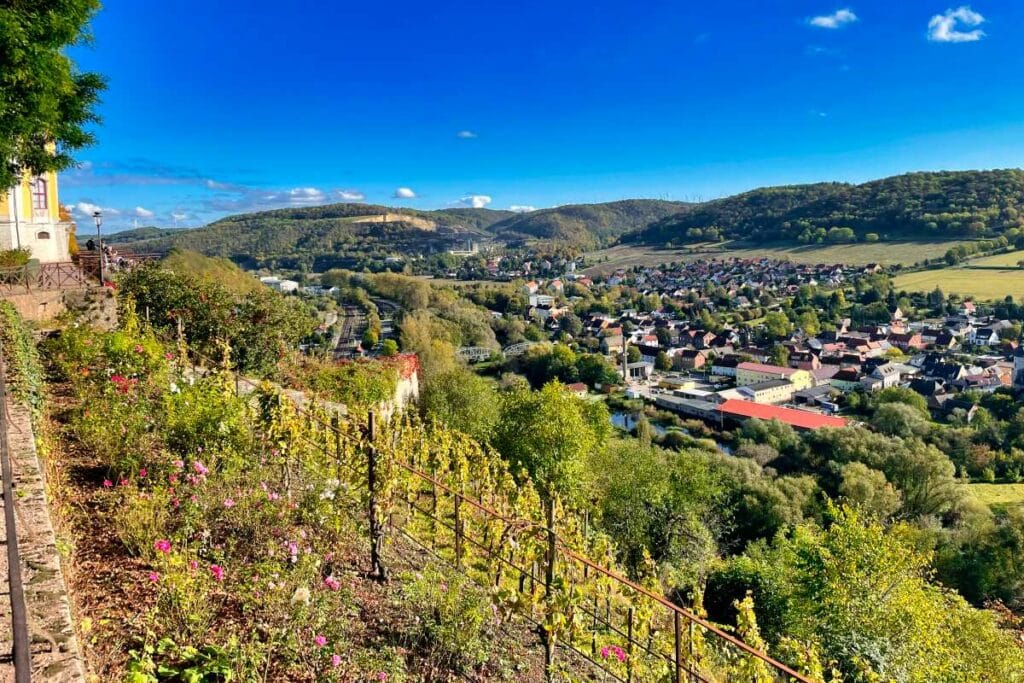
Dornburg castles
And last but not least, there’s a sight near Jena that you absolutely have to see: Actually, it’s three sights, the Dornburg Castles, perched on a cliff high above a slope overlooking the Saale Valley. You can comfortably walk from castle to castle along the edge and will be rewarded with a fantastic view over the Saale valley. No wonder that people speak of the “balcony of Thuringia” at this point. Goethe was also so enthusiastic about this place that he stayed there several times.
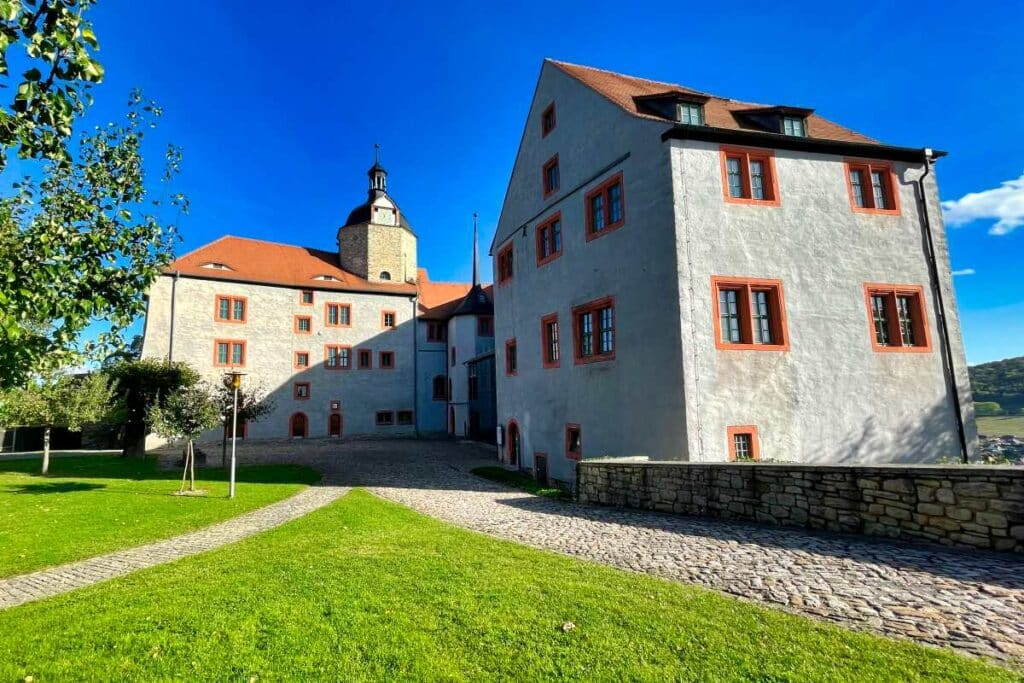
Old castle
The oldest castle is – the name says it all – the Alte Schloss. It was built around 1570. Today it is used as a conference center and is therefore not open to visitors.
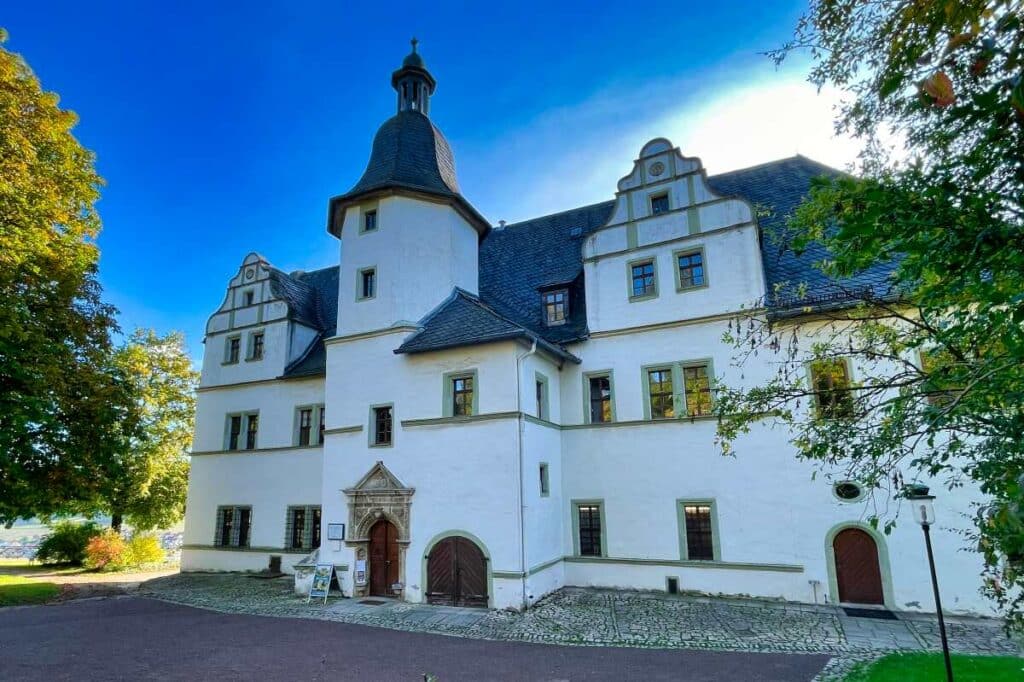
Renaissance castle
The second oldest castle is the Renaissance castle, the first parts of which were built as early as 1539. In 1600, an expansion took place. However, it was not until 1824 that the Grand Duke Carl August of Saxony-Weimar-Eisenach, Goethe’s generous patron, gave it its present form. In the Bergstube, this living room reminds Goethe of his numerous stays.
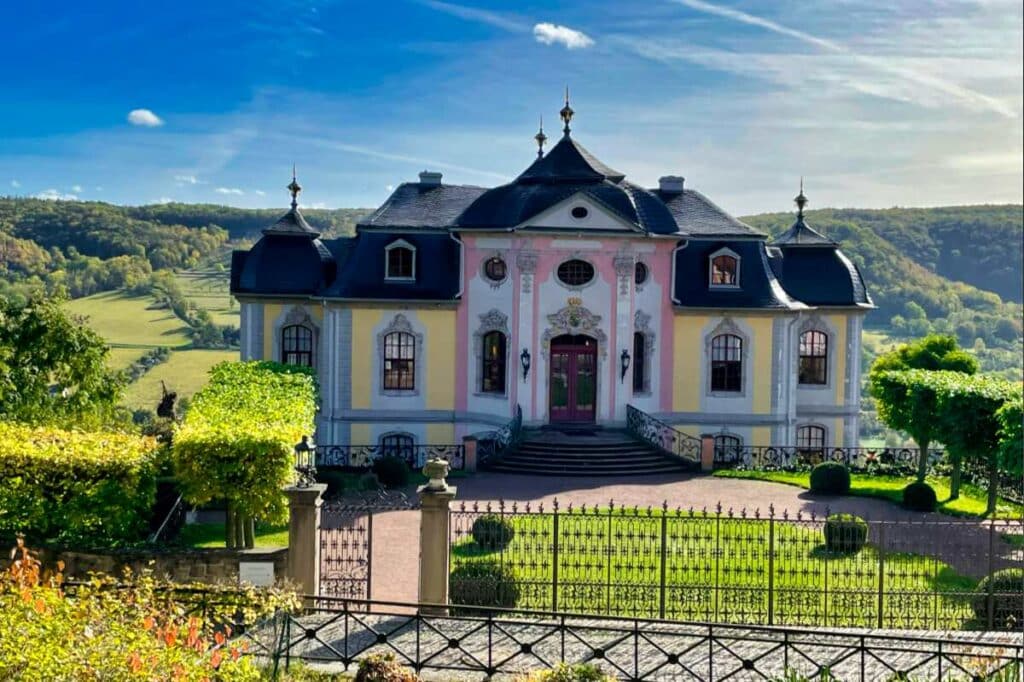
Rococo castle
But the most beautiful of the three castles is the middle one, the rococo castle. It was built in 1740 as a pleasure palace and its interior features state rooms with colorful stucco marble.
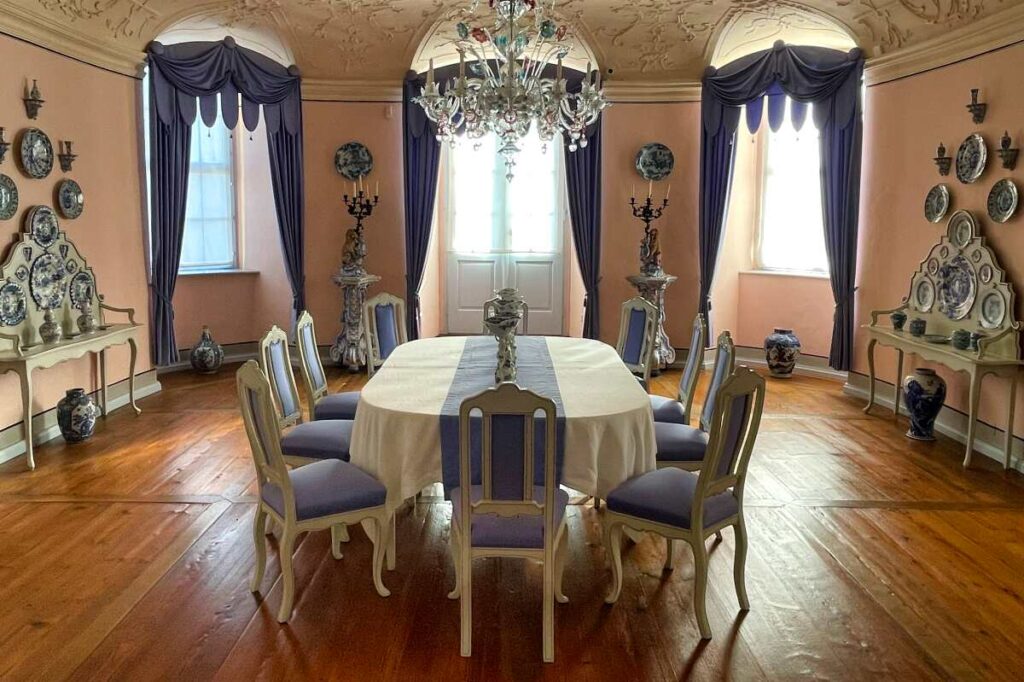
Those who are also interested in modern art: The castle ensemble includes the former Marstall, which already housed the Bauhaus ceramics workshop in the 1920s. Today it can be visited as a museum with numerous original exhibits.
Book tips for the Jena sights
You want to learn more about the Jena sights? Then our book tips are just right for you!
In the brand-new series “MeinTrip” from the Reise Know-How publishing house, a volume on Thuringia has also appeared, in which not only the many Jena sights, but also the entire state is described!
- Israel, Juliane (Author)
In this book not only classic Jena sights are described, but you will also find a list of very personal, beautiful places in Jena.
This book dares to take a different approach, not listing classic Jena sights, but taking a nostalgic trip back in time to Jena’s history.
How did you like our article about the Jena sights? Feel free to let us know and write a comment about the Jena sights!

